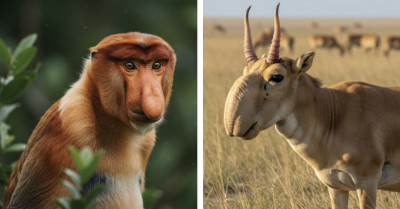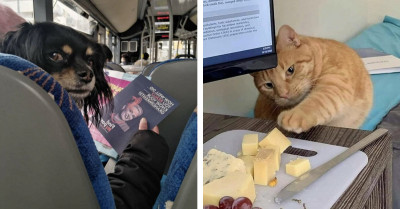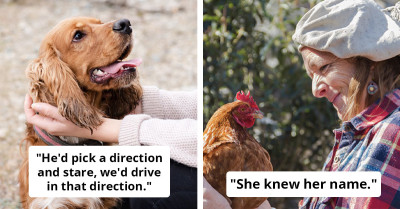What It Really Means When Your Dog Stretches To Greet You
Dogs have countless ways of showing affection to their humans. A wagging tail, a playful lick, or even proudly delivering a favorite toy are all classic gestures of love.
However, sometimes when you walk through the door, your dog may drop into a deep stretch with their front paws extended and their back end raised high. Far from being just a physical routine, this behavior often carries meaning, and pet parents are right to wonder what their dogs are really saying through this movement.
Veterinary behaviorist Wailani Sung explains that there are several reasons why dogs stretch as a form of greeting. "Some dogs might stretch as they greet you if they were lying down before you walked through the door," she notes.
Stretching can also serve to loosen tight muscles or prepare them for more activity now that their favorite person is home. Because stretching is a behavior dogs typically display when they feel comfortable and relaxed, it can be a sign of contentment and trust.
Dogs may also learn to associate stretching with positive attention from their owners. "Some dogs might learn to exhibit this stretching behavior for you when the behavior is reinforced. So, if you think this behavior is cute and praise your pup every time they perform the stretching behavior, they’re more likely to stretch for you again," Sung explains.
Stretching is a behavior dogs typically display when they feel comfortable and relaxed.
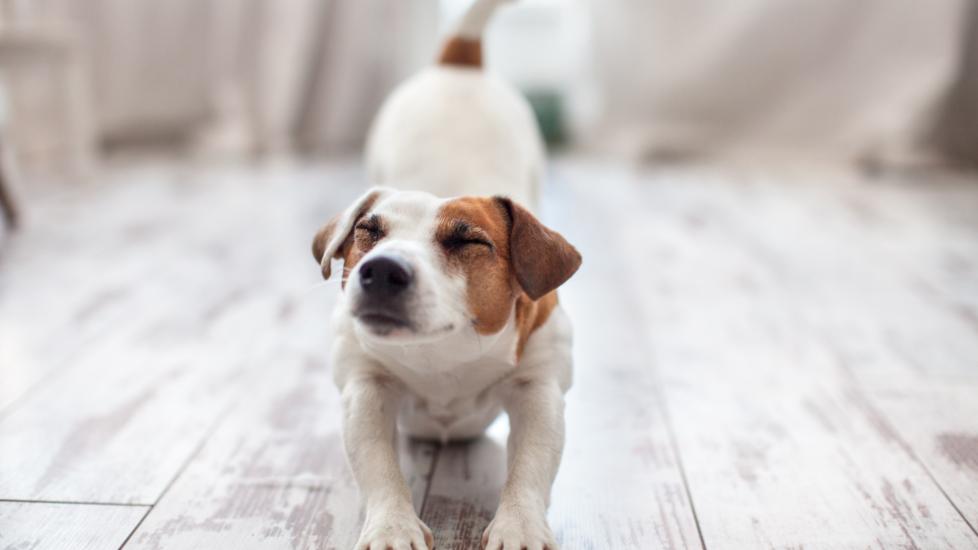
Sometimes, even subtle routines can act as cues. For example, "let’s say part of your routine is to place your hands on your knees, bend over, and speak to your dog while they get up to stretch. Over time, that specific behavior of bending over and placing your hands on your knees could trigger the dog to perform the stretch."
Experts in canine behavior, like Dr. John Wright, emphasize that stretching is a significant form of communication for dogs. This behavior, often referred to as the "play bow," signals a friendly intent, inviting interaction rather than aggression.
Dr. Wright notes that understanding these non-verbal cues can enhance the bond between you and your pet. He recommends observing your dog's body language alongside their stretching to assess their emotional state more accurately.
Of course, stretching is not always about greetings or affection. Dogs may use it in a variety of other situations. A stretch is often considered a non-threatening gesture, and dogs might use it to signal friendliness to a stranger or another dog. In some cases, stretching can be related to discomfort.
"A dog in pain might stretch out the limb that’s causing discomfort. Dogs with abdominal pain might stretch out to try to alleviate pressure on their abdomen," Sung notes.
On the lighter side, dogs commonly stretch after waking to loosen up their muscles or as a displacement behavior when feeling uncertain.
The key is recognizing your dog’s unique way of expressing their bond.
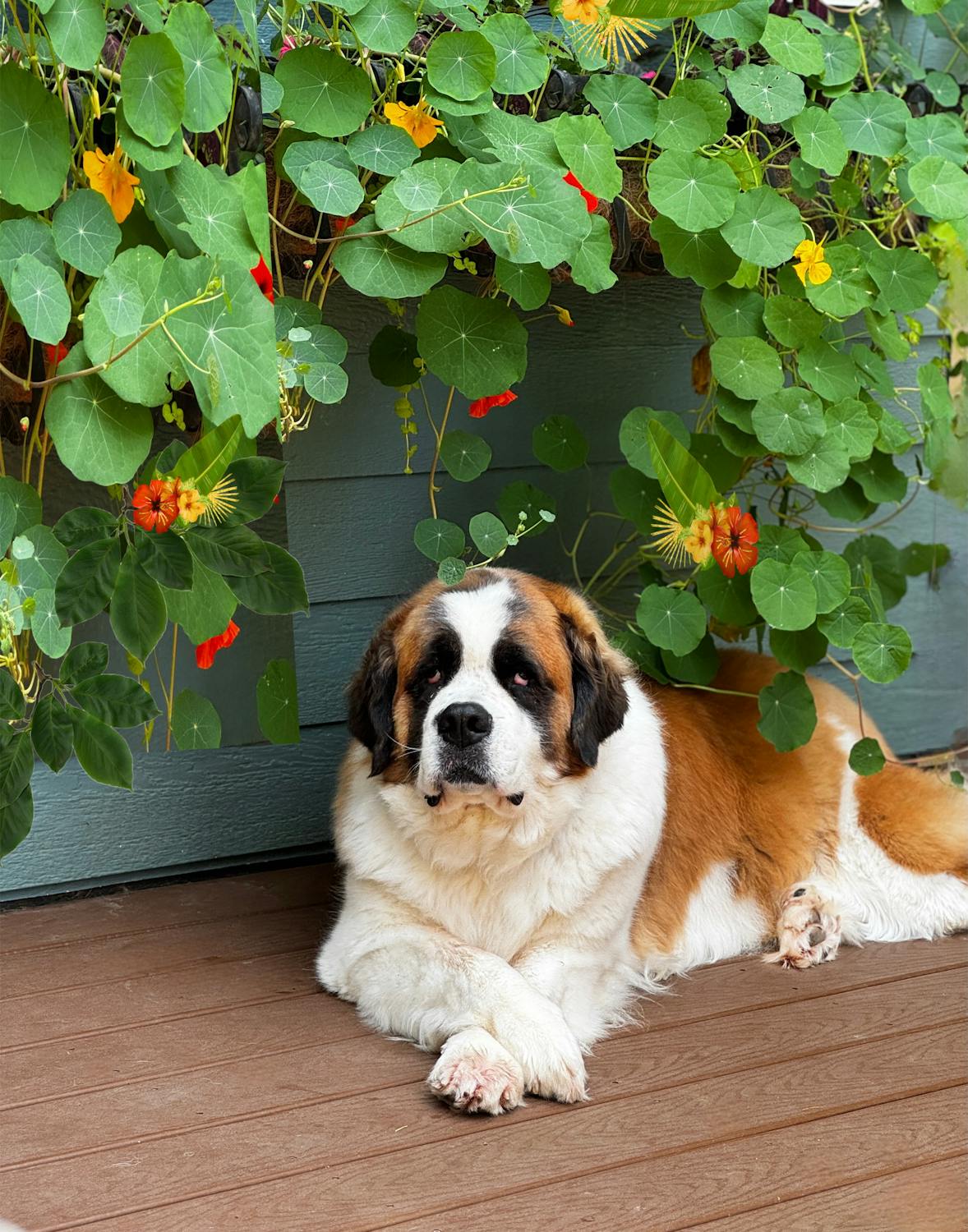
A well-known variation of the stretch is the play bow, in which a dog dips their front half while keeping their tail high to signal an invitation to play. Unlike a full stretch, the head may not dip as low, and the body language is often paired with wagging tails and excited energy.
Not every dog will offer the so-called “I love you stretch” when greeting their humans, and that is perfectly normal. Affection can take many forms. Some dogs show love by leaning against their owners, others with kisses, and some with excited jumps.
The key is recognizing your dog’s unique way of expressing their bond. Whether it is through a stretch, a lick, or a joyful tail wag, every gesture is part of the special language that strengthens the connection between humans and their dogs.
Understanding Canine Communication
According to Dr. Tal Ben-Shahar, a happiness researcher, "Animals communicate through a variety of non-verbal cues, and understanding these signals is crucial for building a strong bond." Dogs, for instance, utilize different body positions, such as stretching, to convey emotions like excitement or submission. Recognizing these cues can enhance interactions and foster a more harmonious relationship. Experts like Dr. Michael Thompson, a child psychologist, suggest that pet owners should observe their dog's behaviors in various contexts to gain valuable insights into their emotional needs and preferences.
Therapeutic Insights & Recovery
Understanding the nuances of your dog's stretching behavior can significantly improve your relationship. As experts suggest, paying attention to non-verbal cues can reveal much about your pet's emotional state.
Engaging in activities that promote positive interactions, like playtime or training sessions, can reinforce your bond. Additionally, consulting resources from canine behaviorists or trainers can equip you with the skills to interpret your dog's language more effectively, enhancing both your understanding and appreciation of your furry companion.
